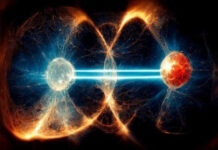Metals have always governed the life standards of generations from stone age to bronze age to iron age to modern age. People have always the quest to engineer metals for their uses leading towards comfort of life. In the present digital based technological era of mankind when nothing is impossible and far away for human to achieve, people are aspiring to bring metals from planets and asteroids. Electricity (power) has already become the lifeline of present civilization and we need more power with sustainability and
greener/cleaner technology. Magnets are needed components for Electric Vehicles (EVs), wind turbines, and other innovations that experts consider crucial to reducing air pollution. Most of that technology currently uses magnets made with what are commonly called “rare earth elements.” They are scattered throughout the planet’s crust and are difficult to gather, requiring invasive and expensive mining. China controls about 58% of rare earth mining and 92% of magnet production, as of 2020, according to a U.S. Energy Department guide to achieving “American Leadership” in the sector. The U.S. contributes about 15% of the global supply, according to the government. “Between the environmental impacts, and the heavy reliance on China, there’s been an urgent search for alternative materials that do not require rare earths,” Cambridge professor Lindsay Greer said in a Cambridge report.
Tetrataenite is made up of stacked layers of nickel and iron in an ordered crystal structure and cannot form under oxidising conditions, such as Earth’s atmosphere. We therefore only find tetrataenite in extra-terrestrial samples such as meteorites. Following on from insights gleaned from iron meteorites, Claire Nichols explains why tetrataenite, with its unique magnetic properties, could be key for future renewable energy technologies. Many minerals have magnetic properties, with some of them able to reliably preserve records of magnetic fields that were active millions — or even billions — of years ago. One such magnetic mineral, tetrataenite, stands out because it does not naturally occur on Earth. Tetrataenite is made up of stacked layers of nickel and iron in an ordered crystal structure and cannot form under oxidising conditions, such as Earth’s atmosphere. We therefore only find tetrataenite in extra-terrestrial samples such as meteorites. Tetrataenite is exciting to study because, due to its crystal structure, it is magnetically extremely ‘hard’. This means that its magnetization is very difficult to overwrite, even when exposed to magnetic fields several orders of magnitude stronger than Earth’s present-day magnetic field. When tetrataenite forms from the reordering of its parent mineral, taenite, it locks in the properties of the magnetic field present at that time. If tetrataenite is subsequently reheated above its ordering temperature (320 °C), it disorders and becomes the mineral taenite, resetting its magnetic field record. Therefore, just the presence of tetrataenite indicates that no significant heating has occurred, and an ancient magnetic record corresponding to original cooling is preserved. A ground breaking technique produces tetrataenite, a material used in permanent magnets only found in meteorites. Permanent magnets are widely used in industry, playing a particularly important role in power generators and motors. The researchers call tetrataenite a “cosmic
magnet” that could revolutionize how we power cleaner technology. Tetrataenite, an iron-nickel alloy, could be the magic magnet that solves some of these problems but the material is formed during the course of millions of years on meteorites and, we don’t yet have tractor beams and transporters to gather them. Cambridge researchers are working to recreate an outer space magnet on Earth. Adding phosphorus to the mix is key to the latest breakthrough, according to a university report. By mixing iron, nickel and phosphorus in the right quantities, they were able to speed up tetrataenite formation by between 11 and 15 orders of magnitude, such that it forms over a few seconds in simple casting. Tetrataenite is a new meteoritic mineral with ideal formula FeNi, which forms by ordering of Fe and Ni atoms in taenite. If successful, the work could give the West renewable tech independence from China, while also securing a more planet-friendly material to help power electric vehicles and other tech. Phosphorus, a common element, works with iron and nickel to create the right atomic movement to form a tetrataenite magnet without taking millions of years in outer space. The researchers said they successfully recreated tetrataenite in a few seconds by pouring the mixture into a mold, according to Cambridge. The phosphorus breakthrough eliminates mass production problems with past work to recreate the material, including a 1960s project using “neutron irradiation.” The technique developed by Cambridge researchers, with help from colleagues in Austria, is a lot simpler. “We just melted the alloy, poured it into a mold, and we had tetrataenite,” Greer said in the university report. The experts are now testing the material to see how it works as a high-performance magnet needed for most of the digital age tech that fills our lives. The goal is to perfect the process of making reliable, space-aged magnets at hyperspeed.















